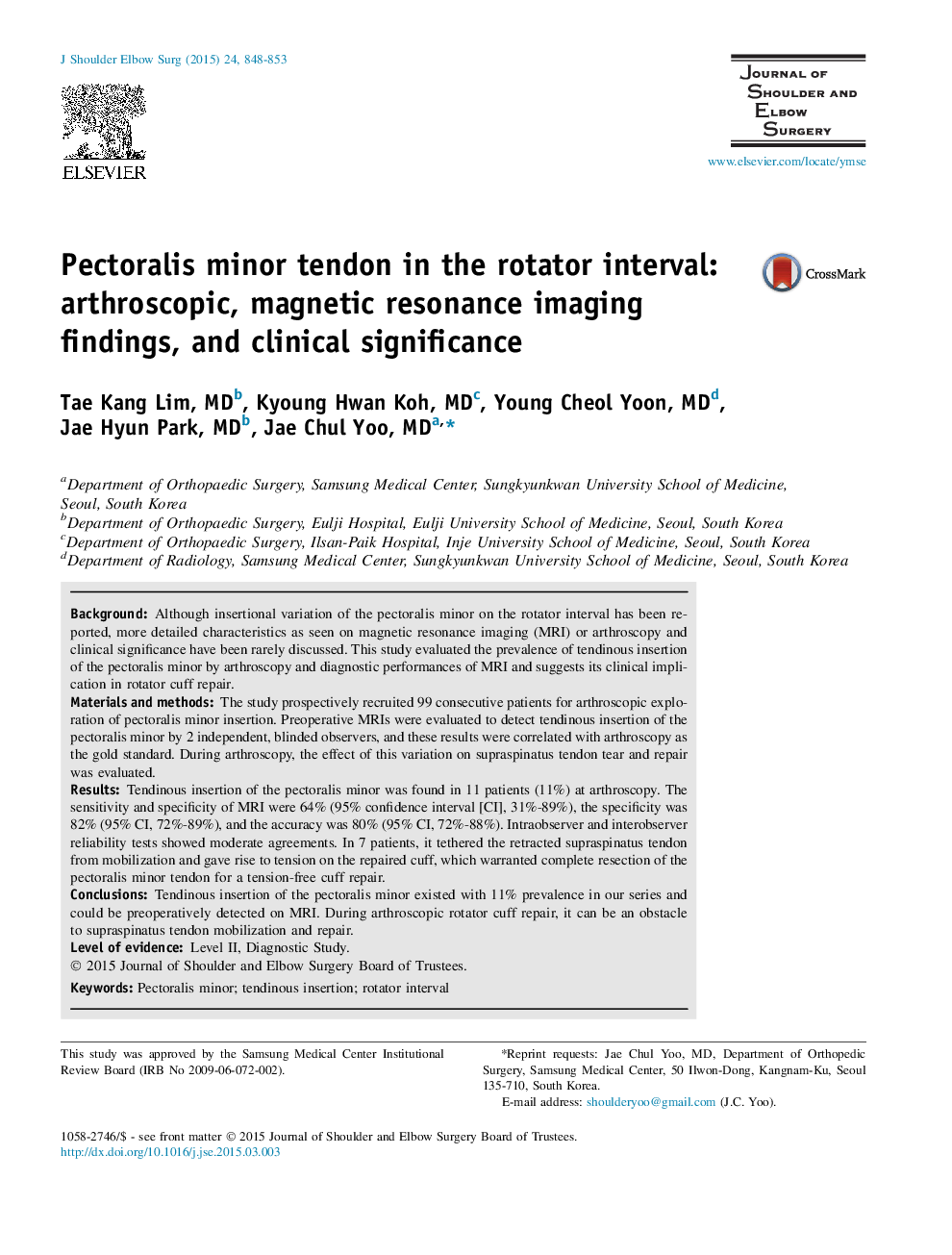| Article ID | Journal | Published Year | Pages | File Type |
|---|---|---|---|---|
| 4073159 | Journal of Shoulder and Elbow Surgery | 2015 | 6 Pages |
BackgroundAlthough insertional variation of the pectoralis minor on the rotator interval has been reported, more detailed characteristics as seen on magnetic resonance imaging (MRI) or arthroscopy and clinical significance have been rarely discussed. This study evaluated the prevalence of tendinous insertion of the pectoralis minor by arthroscopy and diagnostic performances of MRI and suggests its clinical implication in rotator cuff repair.Materials and methodsThe study prospectively recruited 99 consecutive patients for arthroscopic exploration of pectoralis minor insertion. Preoperative MRIs were evaluated to detect tendinous insertion of the pectoralis minor by 2 independent, blinded observers, and these results were correlated with arthroscopy as the gold standard. During arthroscopy, the effect of this variation on supraspinatus tendon tear and repair was evaluated.ResultsTendinous insertion of the pectoralis minor was found in 11 patients (11%) at arthroscopy. The sensitivity and specificity of MRI were 64% (95% confidence interval [CI], 31%-89%), the specificity was 82% (95% CI, 72%-89%), and the accuracy was 80% (95% CI, 72%-88%). Intraobserver and interobserver reliability tests showed moderate agreements. In 7 patients, it tethered the retracted supraspinatus tendon from mobilization and gave rise to tension on the repaired cuff, which warranted complete resection of the pectoralis minor tendon for a tension-free cuff repair.ConclusionsTendinous insertion of the pectoralis minor existed with 11% prevalence in our series and could be preoperatively detected on MRI. During arthroscopic rotator cuff repair, it can be an obstacle to supraspinatus tendon mobilization and repair.
